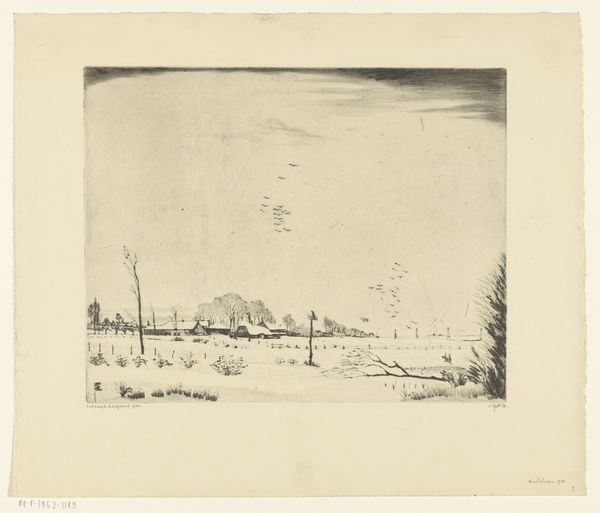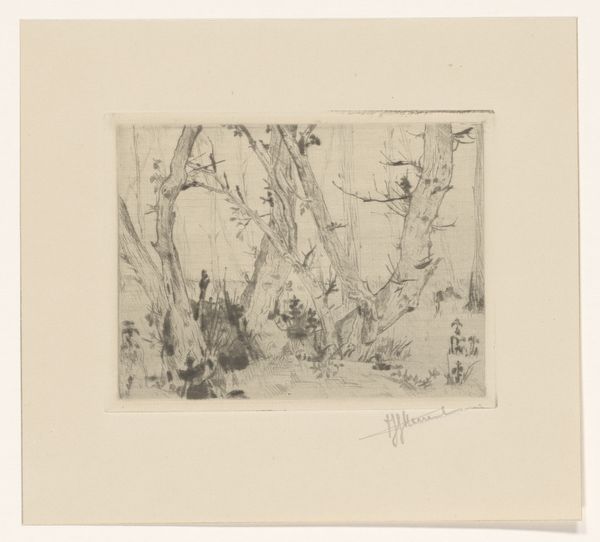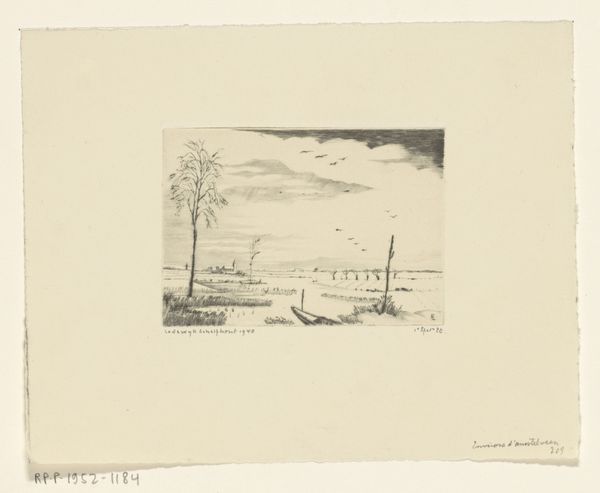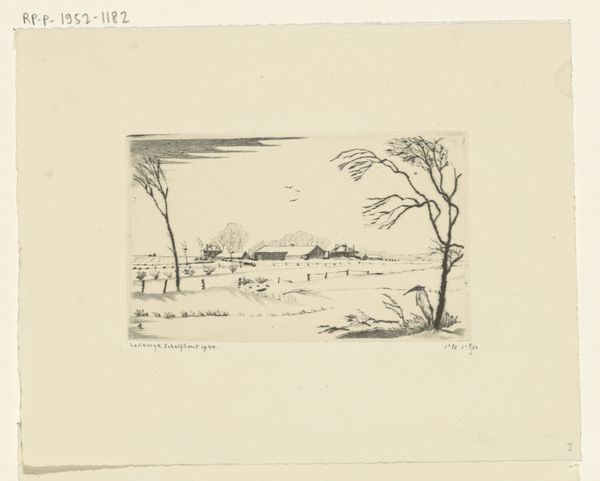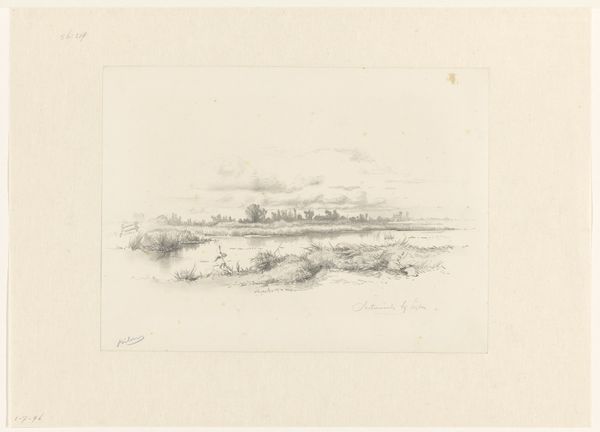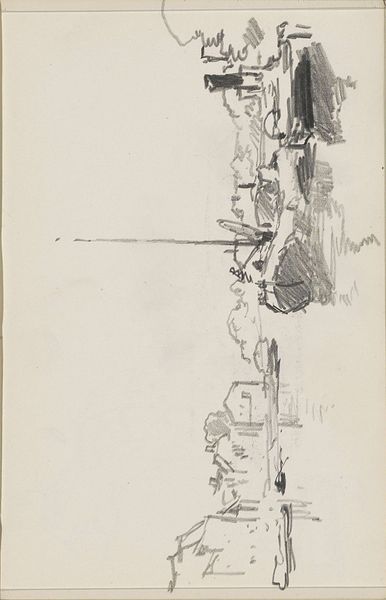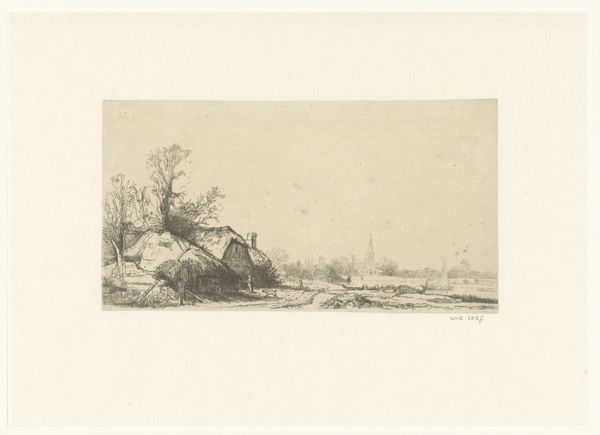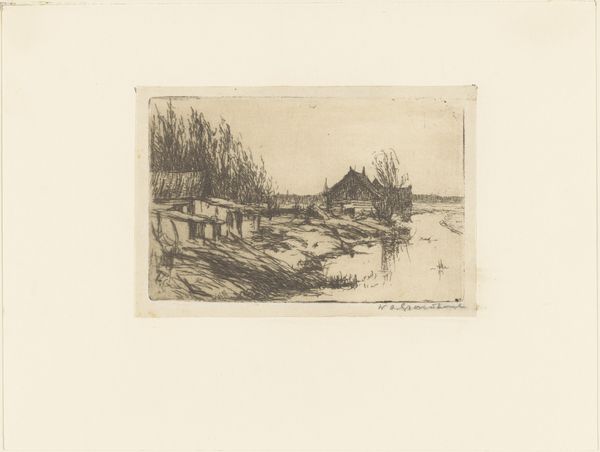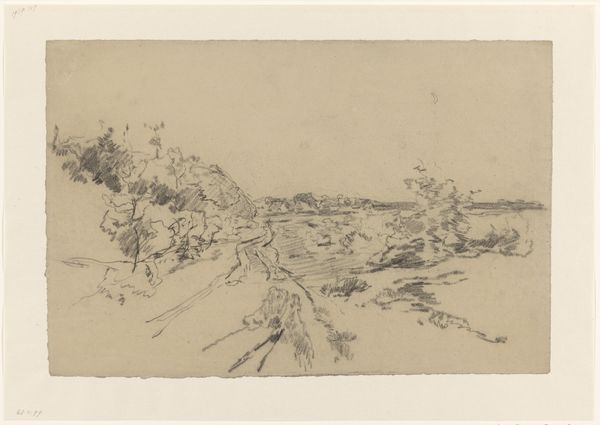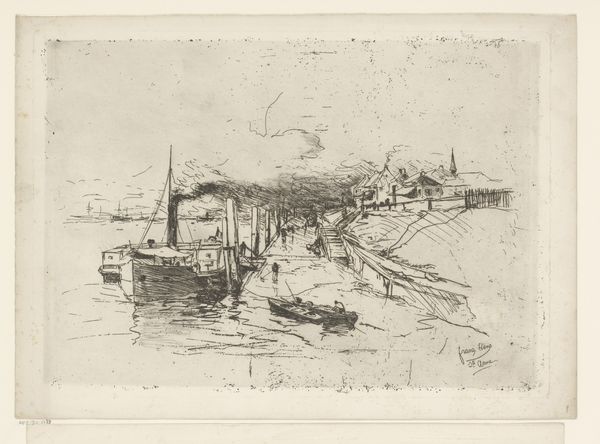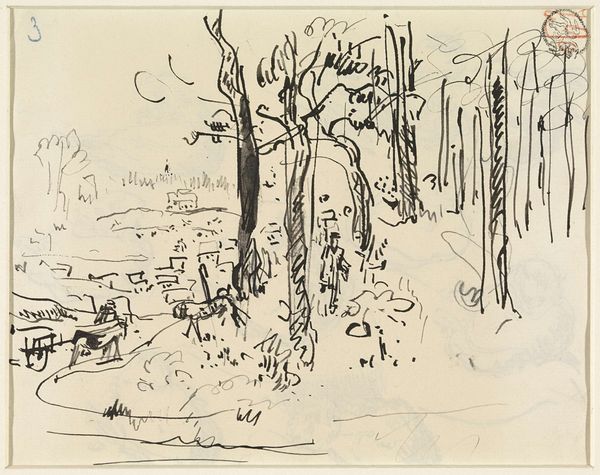
drawing, ink, pen
#
drawing
#
dutch-golden-age
#
pen illustration
#
landscape
#
ink line art
#
ink
#
pen
#
cityscape
Dimensions: height 328 mm, width 380 mm
Copyright: Rijks Museum: Open Domain
Editor: This pen and ink drawing, "The Harbour and the Grote Kerk at Veere," by Johannes Frederik Engelbert ten Klooster, appears to depict a somber and quiet day at the docks. It seems to capture the simplicity of life. What is your take on it? Curator: It evokes a moment in time where labor and life intersect. Consider Veere's historical role as a trading port. The church, looming in the background, symbolizes not just faith but also power, intrinsically tied to the economic engine of the harbor. Who is truly benefiting from this labor and trade, and at whose expense? The boats are waiting. Editor: That’s interesting. It makes me consider the perspective. Does this idyllic scene hide inequalities? Curator: Precisely! The beauty distracts from the potential hardships faced by those working the docks, the families relying on the harbor's prosperity. The artist simplifies, perhaps romanticizes, a complex reality. What choices did the artist make in this simplification, and what impact might they have on how the work is viewed? Editor: I see what you mean. Focusing on certain themes can erase others, like the reality of working-class lives tied to the sea. So this beautiful drawing is also making a statement, maybe unintentionally, about those whose stories it leaves out. Curator: Indeed. Art is never neutral. Ten Klooster, consciously or not, is engaging in a dialogue about the socio-economic landscape of Veere. Thinking about this now, what responsibility, then, do artists and viewers hold in unearthing those concealed stories? Editor: I never thought of it that way before. It is prompting me to think about all the different perspectives a work like this can have, especially those that have been historically overlooked or oppressed. Curator: Exactly! Now you’re challenging the narrative and beginning to appreciate art as a mirror to societal structure and ideology.
Comments
No comments
Be the first to comment and join the conversation on the ultimate creative platform.

